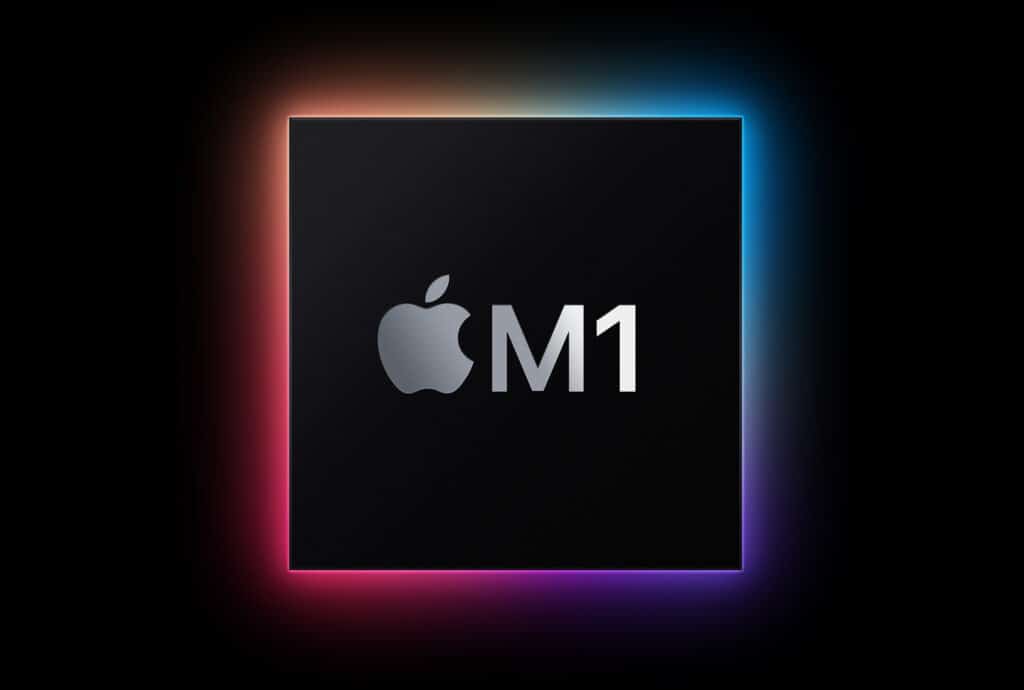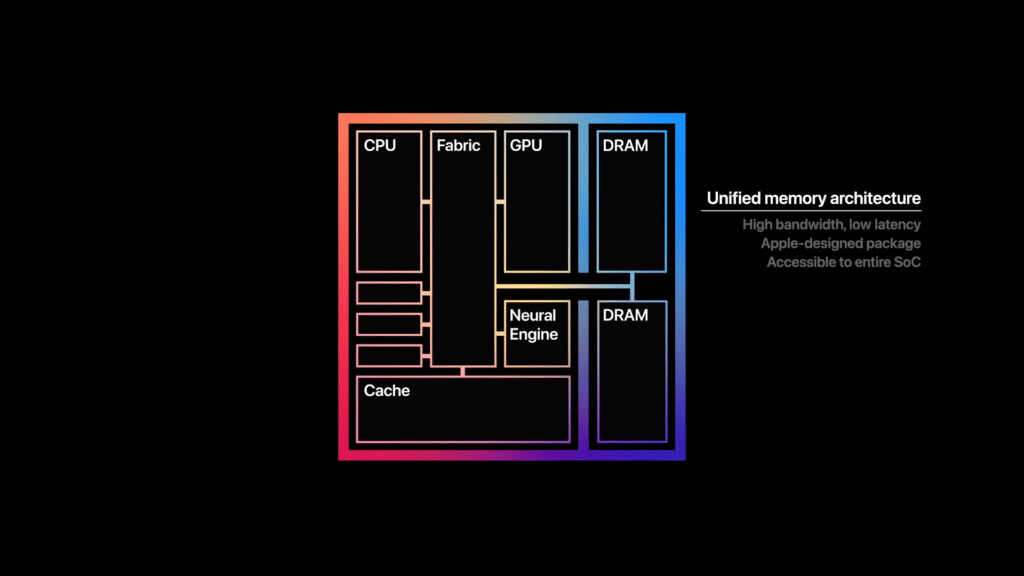
Apple has announced the all-new M1 SoC today. It is the first Apple-developed chipset for Mac. And it is insanely fast.
The Cupertino-based tech giant has launched three new Mac products today, the MacBook Air, MacBook Pro, and the Mac mini. All three devices feature the brand’s M1 chipset. So what is Apple’s M1 chip? Let us have a look.
Integrated SoC

With Intel processors, Apple had to use separate chips in Macs for CPU, memory, I/O, security, and connectivity. Well, the brand doesn’t have to use separate chips anymore. M1 is an SoC (system on a chip), which means that it integrates all of those components into a single package. Thanks to the SoC design, M1 consumes much lesser space under the hood compared to Intel chips and all its related components. Plus, SoC design leads to lower power consumption and lesser heat production compared to traditional x86 chips. Moreover, it reduces component clutter inside a device.
Apple’s M1 chip is based on ARM architecture rather than x86 architecture that is used by Intel processors. The chipset is made on the 5nm fabrication process, making it the first 5nm PC chip. In comparison, the Intel chips that Apple was using for Macs used a 10nm fabrication process. As for the specs, M1 packs an 8-core CPU, an 8-core GPU, and a 16-core Neural Engine.
Up to 3.5x Faster CPU

According to Apple, M1 can deliver up to 3.5 times faster CPU performance compared to Intel CPUs. However, Apple did not reveal which Intel chipset the brand was referring to for comparison. Anyway, the brand claims that the 8-core CPU of M1 allows users to edit high-resolution photos 3 times faster, render a complex timeline in Final Cut Pro up to 6 times faster, and compile code in Xcode up to 3 times faster than before. The faster CPU also offers other benefits such as faster overall performance, smoother scrolling, reduced load time.
Up to 6x Faster GPU

The 8-core GPU of M1 delivers 2.6 teraflops of graphics processing power, which, Apple claims is up to 6 times faster than that on previous Macs. The GPU is capable of running nearly 25,000 threads simultaneously, making it possible for you to playback multiple 4K video streams for rendering complex 3D scenes and run graphics-intensive game like “Shadow of the Tomb Raider” with up to 4x higher frame rates. That is not all though. Apple is claiming that M1’s GPU delivers the fastest graphics performance in the world for integrated graphics.
15x Faster ML Performance

The 16-core Neural Engine of M1 can perform 11 trillion operations per second, which, according to Apple, is 15 times faster than what Intel chips could do. With a strong ML performance, users can now carry out tasks like video analysis, voice recognition, and image processing at a much faster pace.
Other Improvements

The M1 chip supports PCIe Gen 4 technology, which means that it can communicate with PCIe Gen 4 based components 2x faster compared to PCIe Gen 3 that you got with Intel processors. In fact, M1 has a new storage controller that is based on PCIe Gen 4 technology and it can offer 2x faster storage performance. M1 also has a new ISP for higher quality video with better noise reduction, greater dynamic range, and improved auto white balance. It also supports USB 4 with Thunderbolt connectivity.
In a nutshell, M1 chip offers faster CPU, GPU, and ML performance while being more compact in size and consuming lesser power than an Intel CPU. That, in our opinion, is a win-win situation for Apple. However, what we need to see now is how quickly do developers optimize their apps – that were up until now optimized for x86 CPUs – for M1 chip. We also need to see how does the optimization of these apps for M1 chip will affect their performance on existing x86-based Macs.
Also Read: Apple Still Selling High-end 13-inch MacBook Pro with Intel CPUs
[Source: Apple Newsroom]